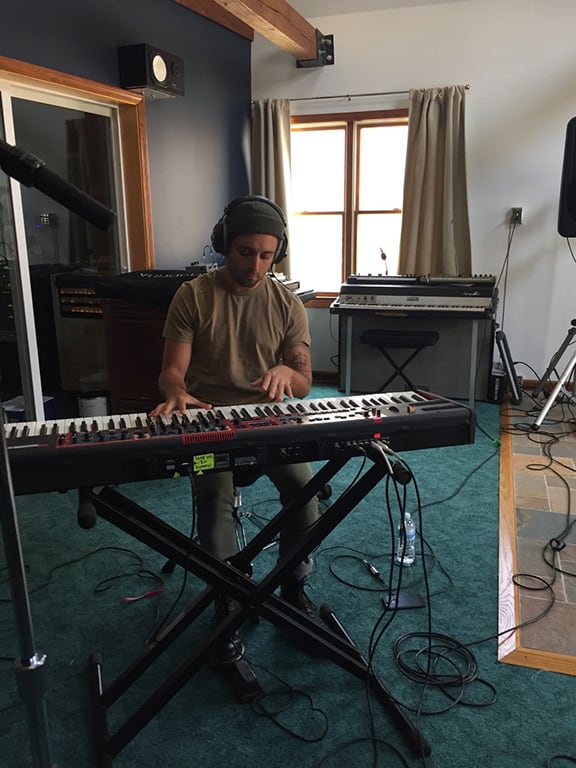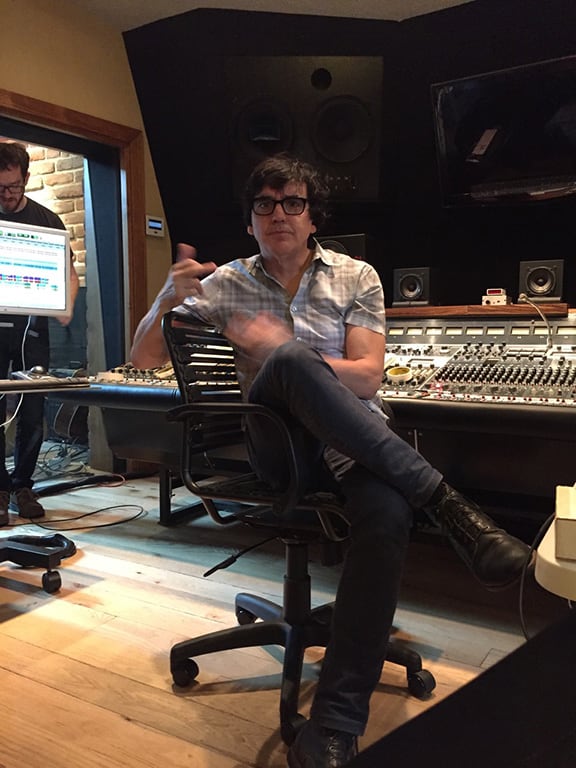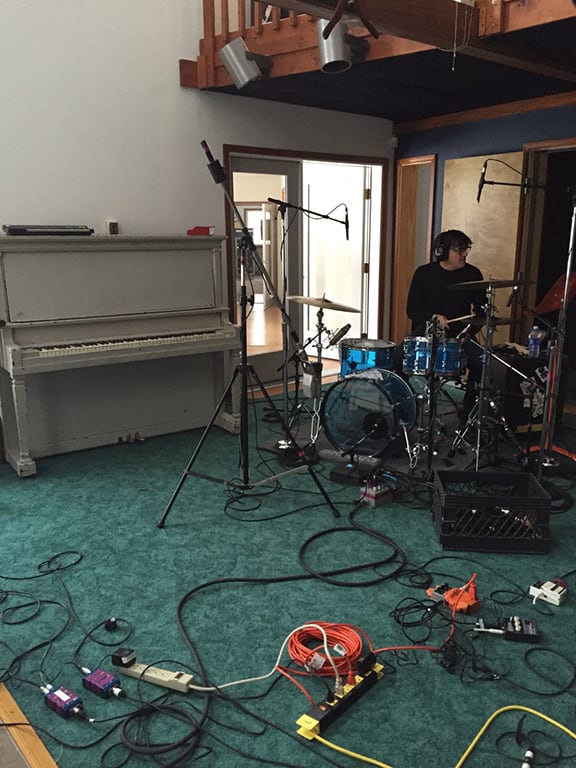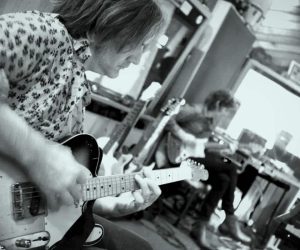
Fridmann-isms with Spoon
Jim Eno is pretty comfortable running his own successful studio, Public- Hi-Fi in Austin. But when Spoon got the chance to work with Dave Fridmann again, it was worth braving the winter in upstate New York to spend time with the super-producer.

Artist: Spoon
Album: Hot Thoughts
Spoon are used to being apart. Frontman Britt Daniel splits his time between his place in LA and his condo in Austin, drummer Jim Eno is based near his Austin studio Public Hi-Fi, and keyboard/guitarist Alex Fischel is based in LA. So when they regrouped with bass player Rob Pope in upstate New York at Dave Fridmann’s Tarbox Studios, it seemed the perfect opportunity to get off the grid and immerse themselves in their ninth album, Hot Thoughts.
Then the cold seeped in. “When you’re there in the winter it’s really miserable,” said Eno. “There’s really nothing to do; you’re just sleeping there, it’s pretty hard.” After the first two-week stint, they made a rule: “We’d only work a week at a time up there to keep our sanity.”
They quickly returned to their fragmented, cross-country approach; either heading back to Eno’s studio for overdubs between sessions, or Daniels returning to LA to write lyrics, and each of them taking multi-track sessions home so they could play around with arrangements. “We would usually start by tracking to tape and do some initial overdubs at Tarbox,” said Eno. “By the end of the session we had to get everything back into Pro Tools in order to do our shared recording among three different cities.”
The band is obviously very capable with technology, which is not surprising considering they’ve been recording themselves since getting dropped by Elektra in ’98. “I figured it would be good if I started getting gear so I could be more in control and self-sufficient,” said Eno about the gear collection that eventually became Public Hi-Fi. “It was also to save us some money and move forward on things. I bought an early Pro Tools system and then a tape machine and a console.”
Being capable of recording and production makes it harder to trust someone else with your sound, but this is the second time Spoon has worked with Fridmann. He appeared halfway through their last album, They Want My Soul, and expanded Spoon’s sound. They’d always been big fans of his work with Sleater-Kinney, MGMT, Flaming Lips and Low, but “you think about Spoon and we tend to have fairly tight drums and production,” said Eno. “Then you listen to Dave and he’s pretty much the polar opposite to that.” They thought it would be a good mix, and when people kept telling them, ‘Dave isn’t one to make it seem like his record’, they leapt in and were really happy with the marriage.
“His sense of building a song is great,” remarked Eno with obvious admiration for his fellow producer. “Keeping the listener engaged throughout a three-and-a-half/four-minute song takes tricks. You have to introduce new things and make things slightly different. He’s a master at that. He’ll have one little sound that comes in on the chorus and it won’t come in again. He’ll layer drums so he can mute things here and there in the middle of the song. It’s really great to be around him and see him work. I could go on for a while.”
Keeping the listener engaged throughout a three-and-a-half/four-minute song takes tricks. He’s a master at that


Going into a session with Fridmann with specific expectations would be unwise. His not likely to stick to any rules or conventions, it’s all about what works for a song. Eno gave an example from their previous record. He and Daniels had recorded a demo for the song where Eno played a tight hip hop groove, going for a Dr Dre feel. When they got to Tarbox, instead of getting Eno to re-track the drums, Dave just programmed the same beat in. “I never played it, but I did play it, you know what I mean?” said Eno. “Because he programmed every little kick drum and my little fills, and made them super tight on the grid.” Eno is old enough not to be perturbed by that idea either. He’s all onboard with whatever approach makes the record more interesting.
It goes both ways. During the mix of Can I Sit Next To You, Eno wanted to keep pushing the level of the string section. He explained, “Dave had them at one volume and they weren’t loud enough and Britt and I wanted it louder. I said, ‘Dave it’s not parting my hair yet!’ I just kept making him turn it up. It was so loud, but Dave is really on board with things being dramatic.”


Programming drums isn’t what Fridmann is known for. If anything, it’s the opposite — bombastic, big live drum sounds. “Dave has a way of using rooms to add a lot of excitement to a drum sound,” explained Eno. “You can hear it on Do I Have to Talk You Into It. A lot of that sound is Dave using his room and compression and a lot of distortion, then being able to balance those mics so it sounds really cool. He will do things like place a ribbon mic right in front of the kit, distort the crap out of it through one of his crazy mic preamps and distort the crap out of it and that would be maybe 30% of the sound.
“He would often use stereo overheads, a Beyer M88 on kick and his room mics would be fairly close. But that’s the positive about working with an engineer… I don’t have to worry about that stuff. I have a hard enough time getting a drum take. I make a lot of very subtle changes to my headphone mix when I’m tracking. I might be asking Dave to raise the snare by one and a half dB. A lot of it comes down to, ‘Dave this sounds badass and excites me when I listen to it on headphones so I’m gonna get a good take.’
“I tend to record drums a lot tighter using a lot of close mics and maybe a perspective mic up front of the kit. I consider what I do pretty basic, so I feel like Dave takes it to the next level. He’s a professional! There was one time when I was hanging out in the studio with Dave and his son. His son asked him a question and Dave said, ‘Jim and I are professional recording engineers, that’s why we do this…’ Dave Fridmann just called me a professional recording engineer… what a day!”
















RESPONSES